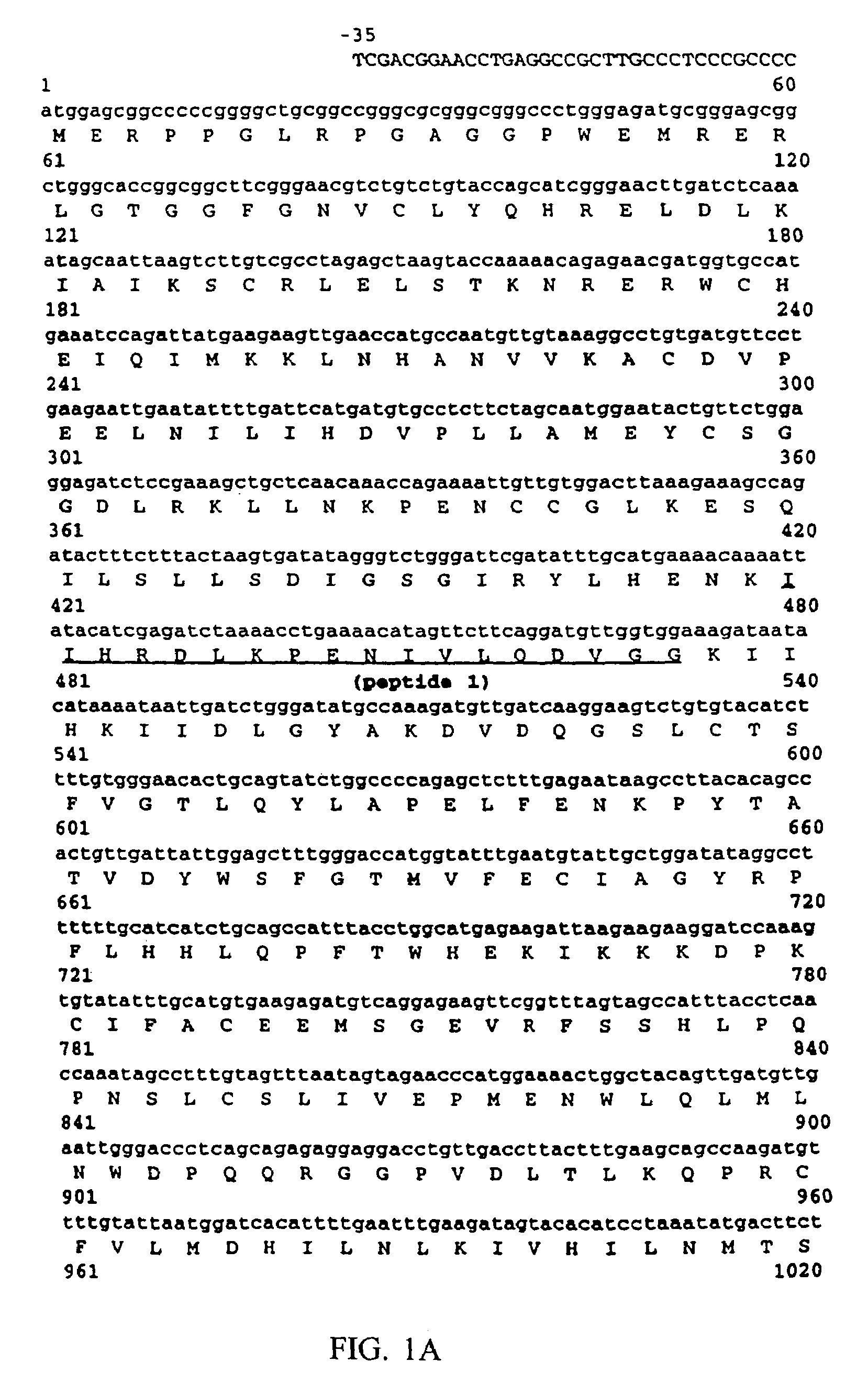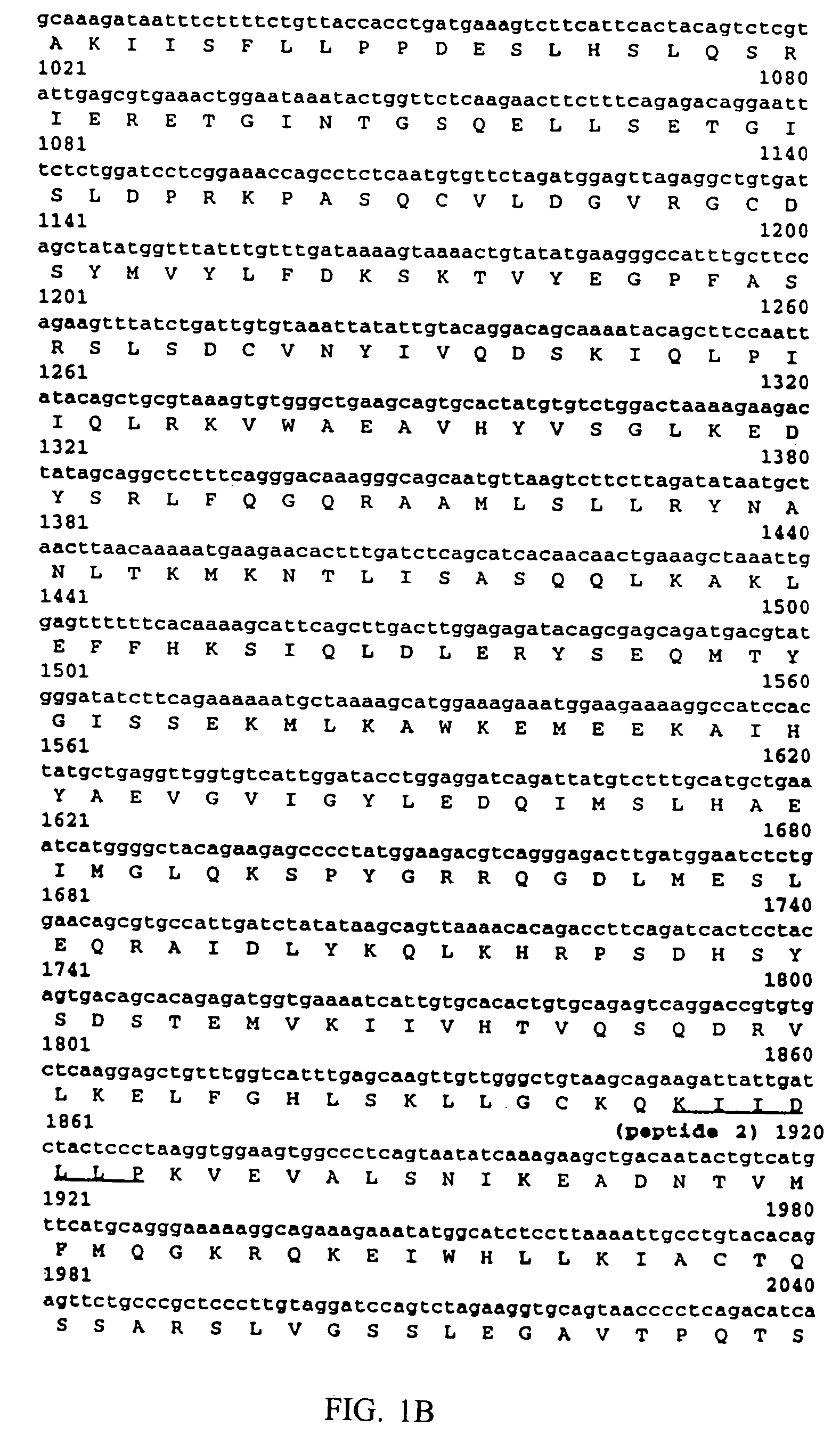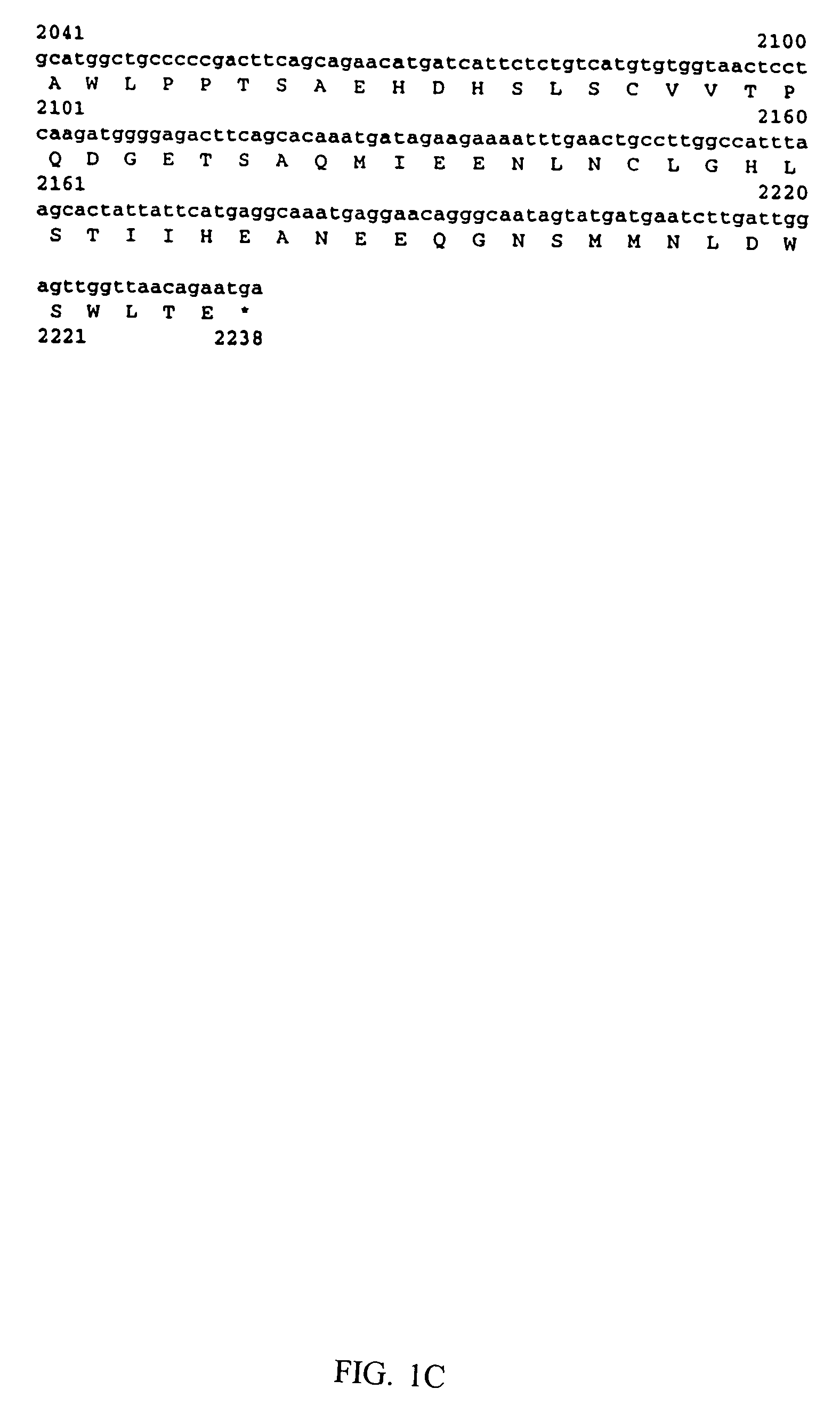IkappaB Kinase-beta (IKKbeta) binding antibodies and methods of using same
a technology of ikappab kinase and binding antibodies, which is applied in the field of molecular biology and biochemistry, can solve the problems that the signal transduction pathway leading to the expression of cell adhesion molecules has not been identified
- Summary
- Abstract
- Description
- Claims
- Application Information
AI Technical Summary
Problems solved by technology
Method used
Image
Examples
example i
Identification and Characterization of a Human IκB Kinase Complex and IKK Subunits
[0121]This example provides a method for identifying and isolating a cytokine responsive protein kinase complex that phosphorylates IκB, which regulates NF-κB activity, and catalytic subunits of the protein kinase complex.
A. Kinase Assays:
[0122]Kinase assays were performed using GST fusion proteins containing amino acid residues 1 to 54 of IκB. The fusion proteins were linked to glutathione SEPHAROSE and the beads were used directly in the assays. At earlier stages in the purification of the IKK activity, the beads were washed prior to loading onto the gel to minimize contributions from other proteins. In some of the later characterization of highly purified material, soluble fusion protein was used.
[0123]Three distinct substrates for the IKK activity were used: 1) substrate “WT” contained amino acid residues 1 to 54 of IκBα; 2) substrate “AA” contained amino acid residues 1 to 54 of IκBα, except that ...
example ii
Identification and Characterization of a Full Length Human IKKα Subunit
[0146]This example provides methods for isolating a nucleic acid molecule encoding the IKKα subunit and for characterizing the functional activity of the subunit.
A. Cloning of cDNA Encoding Human IKKα:
[0147]Degenerate oligonucleotide (length) sequences of the amino acid sequences of two peptide fragments (SEQ ID NOS: 3 and 4) of the IKKα (see FIG. 1) were searched in the GenBank DNA sequence database. This search revealed that nucleotide sequences encoding both peptide fragments were present in a partial cDNA encoding a portion of a protein designated human CHUK (GenBank Accession #U22512; Connelly and Marcu, supra, 1995).
[0148]Based on the human CHUK cDNA sequence, PCR primers were prepared corresponding to the 5′-terminus (5′-CCCCATATGTACCAGCATCGGGAA-3′; SEQ ID NO: 5) and 3′-terminus (31-CCCCTCGAGTTCTGTTAACCAACT-5′; SEQ ID NO: 6). SEQ ID NO: 5 also contains a Nde I restriction endonuclease site (underlined) and...
example iii
Identification and Characterization of a Full Length Human IKKβ Subunit
[0157]This example provides methods for isolating a nucleic acid molecule encoding an IKKβ catalytic subunit of IKK and characterizing the activity of the IKKβ subunit.
A. Cloning of IKKβ cDNA:
[0158]IKKβ was purified following SDS-PAGE and subjected to internal peptide sequencing (Example I). Five peptide sequences were obtained as follows: KIIDLGYAK (SEQ ID NO: 10); KXVHILN (M / Y) (V / G) (T / N / R / E / ) (G / N) TI (H / I / S) (SEQ ID NO: 11; KXXIQQD (T / A) GIP (SEQ ID NO: 12); KXRVIYTQL (SEQ ID NO: 13); and KXEEVVSLMNEDEK (SEQ ID NO: 20), where amino acid residues that could not be unambiguously determined are indicated by an “X” and where amino acids that could not be distinguished are shown in parentheses. These peptide sequences were used to screen the NCBI EST database and a 336 base pair EST (EST29518; Accession No. AA326115) encoding SEQ ID NOS: 13 and 20 was identified. This EST was determined to correspond to amino aci...
PUM
| Property | Measurement | Unit |
|---|---|---|
| apparent molecular mass | aaaaa | aaaaa |
| apparent molecular mass | aaaaa | aaaaa |
| molecular weights | aaaaa | aaaaa |
Abstract
Description
Claims
Application Information
 Login to View More
Login to View More - R&D
- Intellectual Property
- Life Sciences
- Materials
- Tech Scout
- Unparalleled Data Quality
- Higher Quality Content
- 60% Fewer Hallucinations
Browse by: Latest US Patents, China's latest patents, Technical Efficacy Thesaurus, Application Domain, Technology Topic, Popular Technical Reports.
© 2025 PatSnap. All rights reserved.Legal|Privacy policy|Modern Slavery Act Transparency Statement|Sitemap|About US| Contact US: help@patsnap.com



